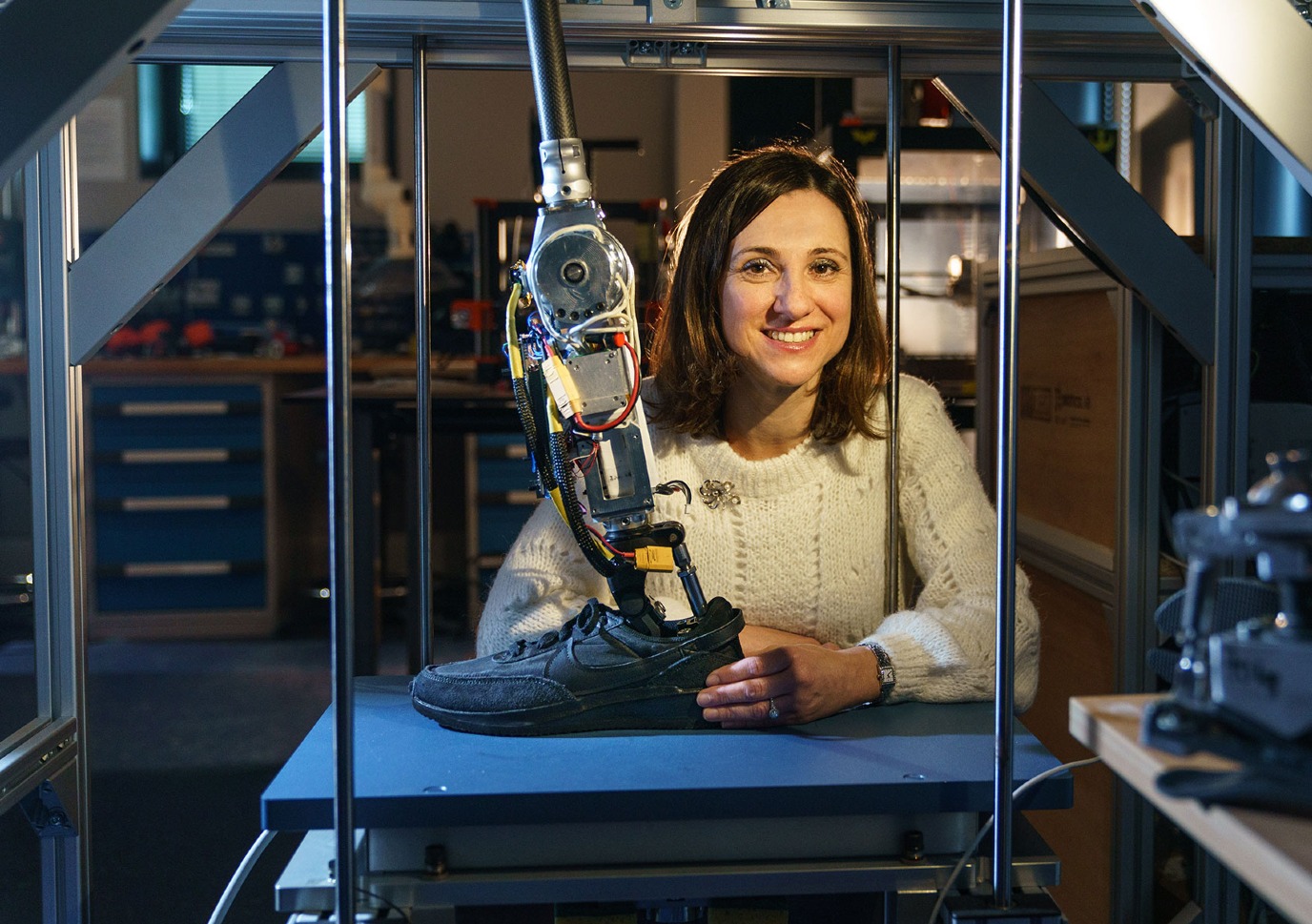Raffaella Carloni nominated for Klokhuis Science Prize 2025
RUG Professor of Robotics Raffaella Carloni has been nominated for the Klokhuis Science Prize 2025! She is competing with her research, developing a bionic leg that moves just like a normal leg. Klokhuis is a children’s TV program for 7-12-year-olds.
Until 16 March, you can vote for your favourite research via Het Klokhuis. The winning research will get its own Klokhuis episode. The winner will be announced during the International Science Film Festival: Meet the Researcher.
A bionic leg to go anywhere
‘When you no longer have a lower leg, it's hard to just walk. With the prosthesis, you have to think about it all the time and you don't walk up a hill so easily, for example. I am working on designing a bionic leg that can move just like a normal leg. The parts work just like your muscles and bones. So you don't walk like a robot, but rather like someone who still has two legs. You then don't have to think about having a prosthesis and you can just move around and do fun things.’ Prof Raffaella Carloni, Adjunct Professor, Faculty of Science and Engineering - Artificial Intelligence (Bernoulli Institute), Department of Robotics

“Imagine a bionic leg that not only allows someone to walk again, but also allows them to do so without thinking about it all the time. That would make life much easier for those who need such a prosthesis.-- Raffaella Carloni”-- Raffaella Carloni
In 2023, Carloni won the FSE Impact Award for her work on bionic knees. She studies methods and techniques that allow systems from robotics to interact smoothly with humans. Read more about her research as an RUG creator here.
More news
-
16 October 2025
Creating sustainable batteries to power the energy transition
-
15 October 2025
Night of the Night 2025
-
08 October 2025
Not all plastic needs to be bio-based or biodegradable
